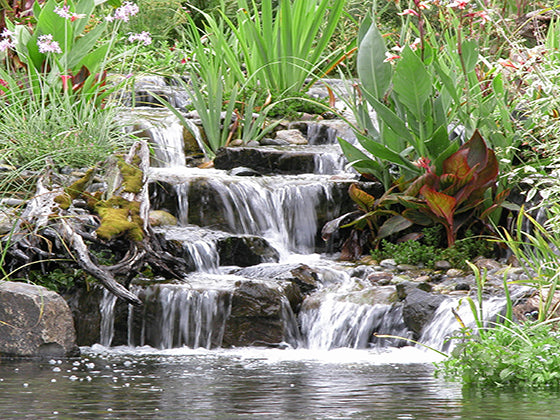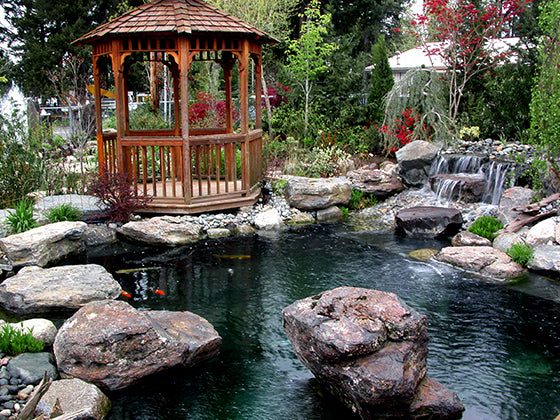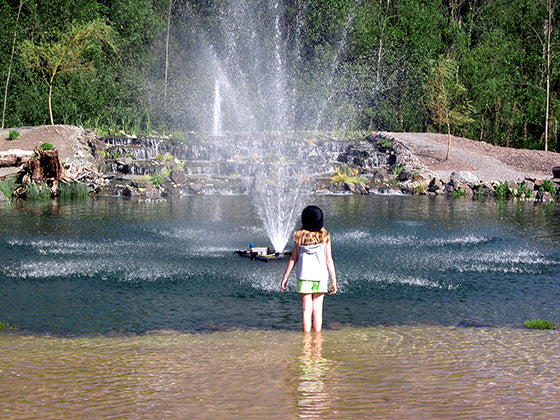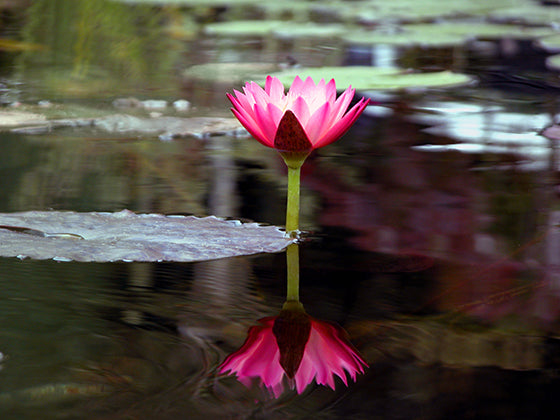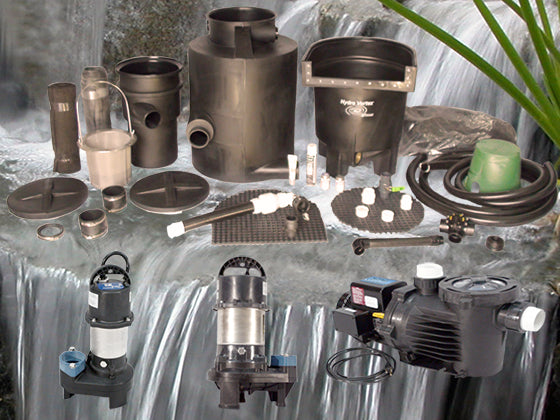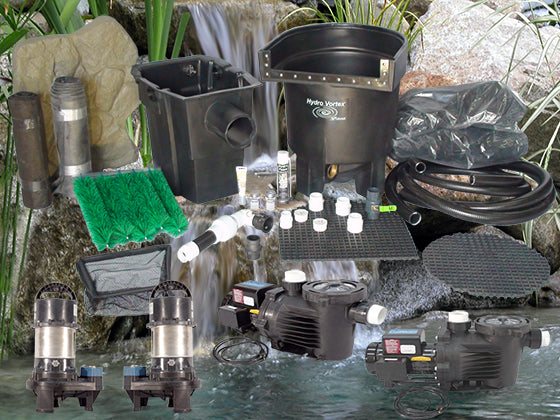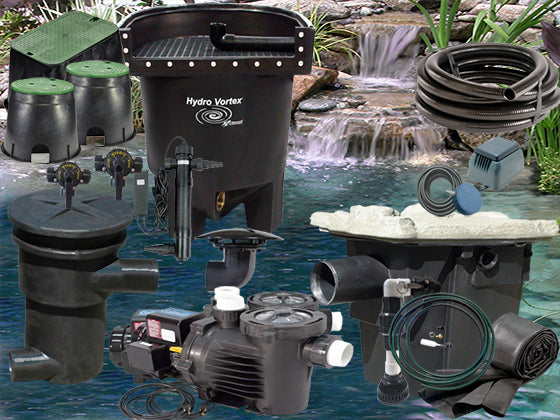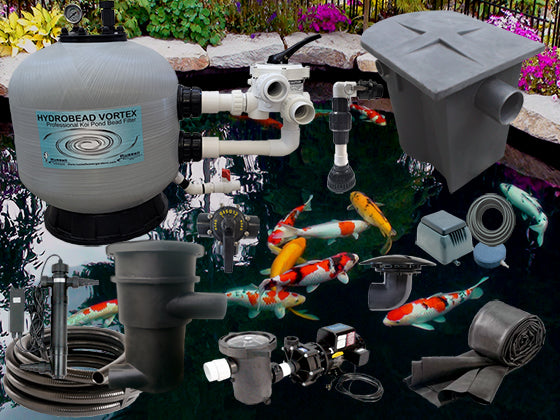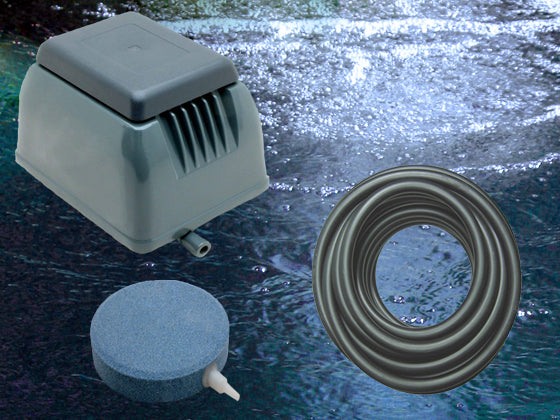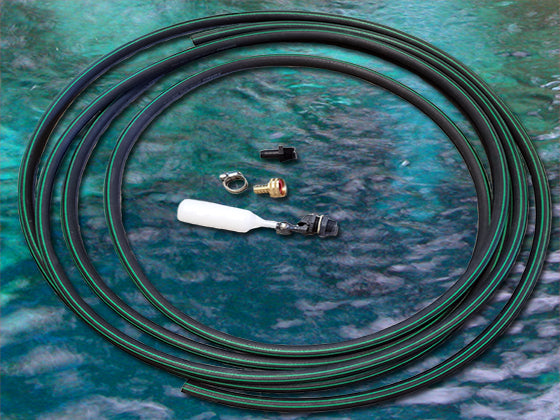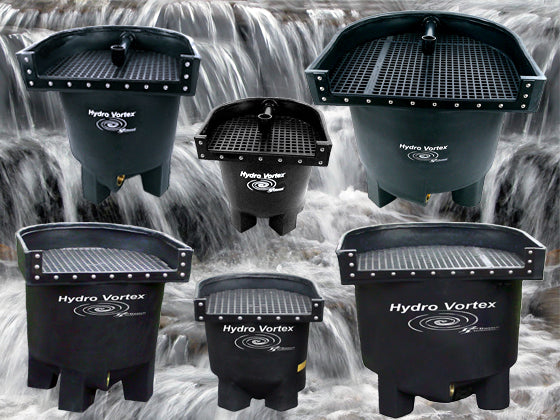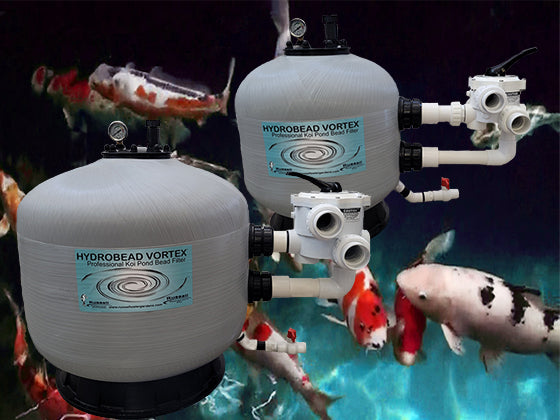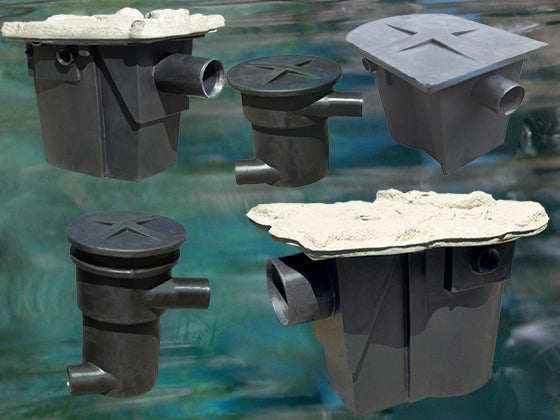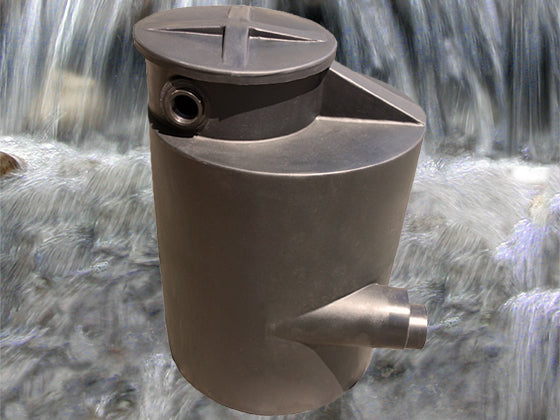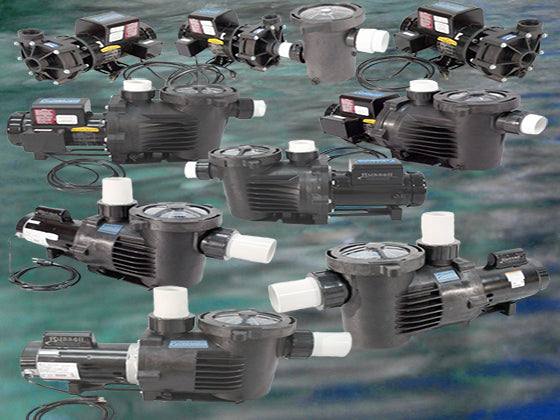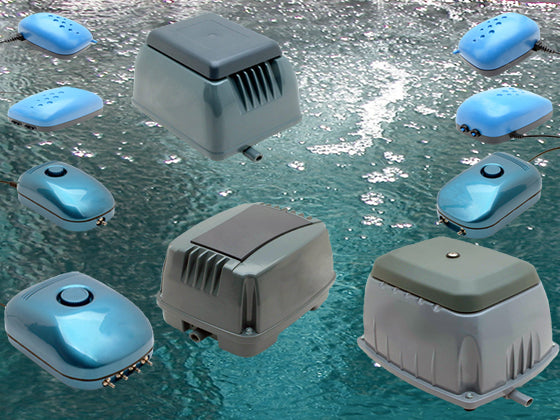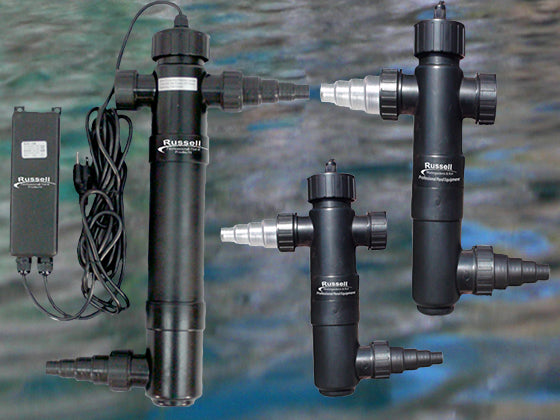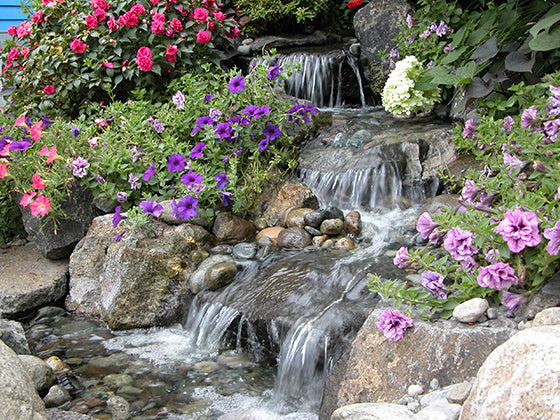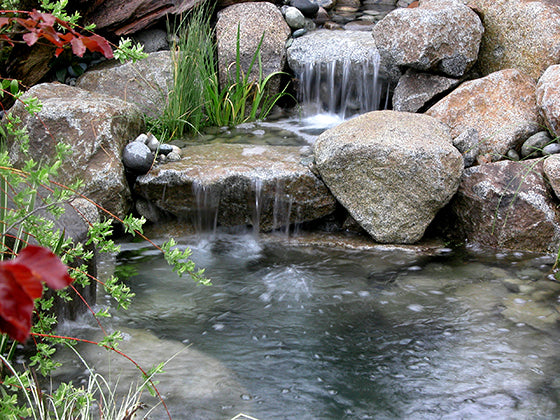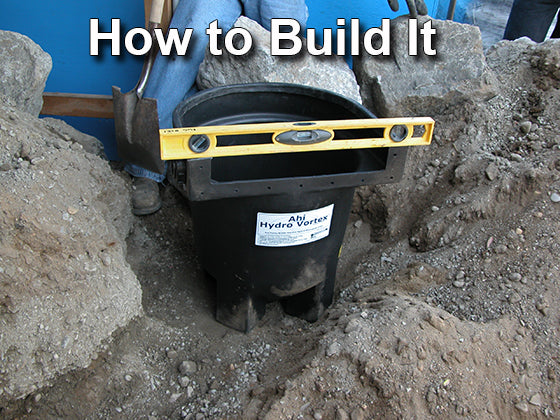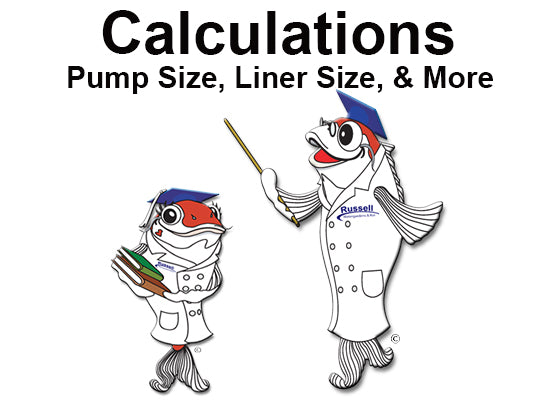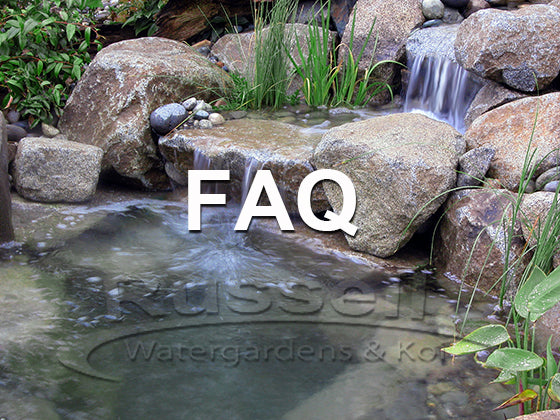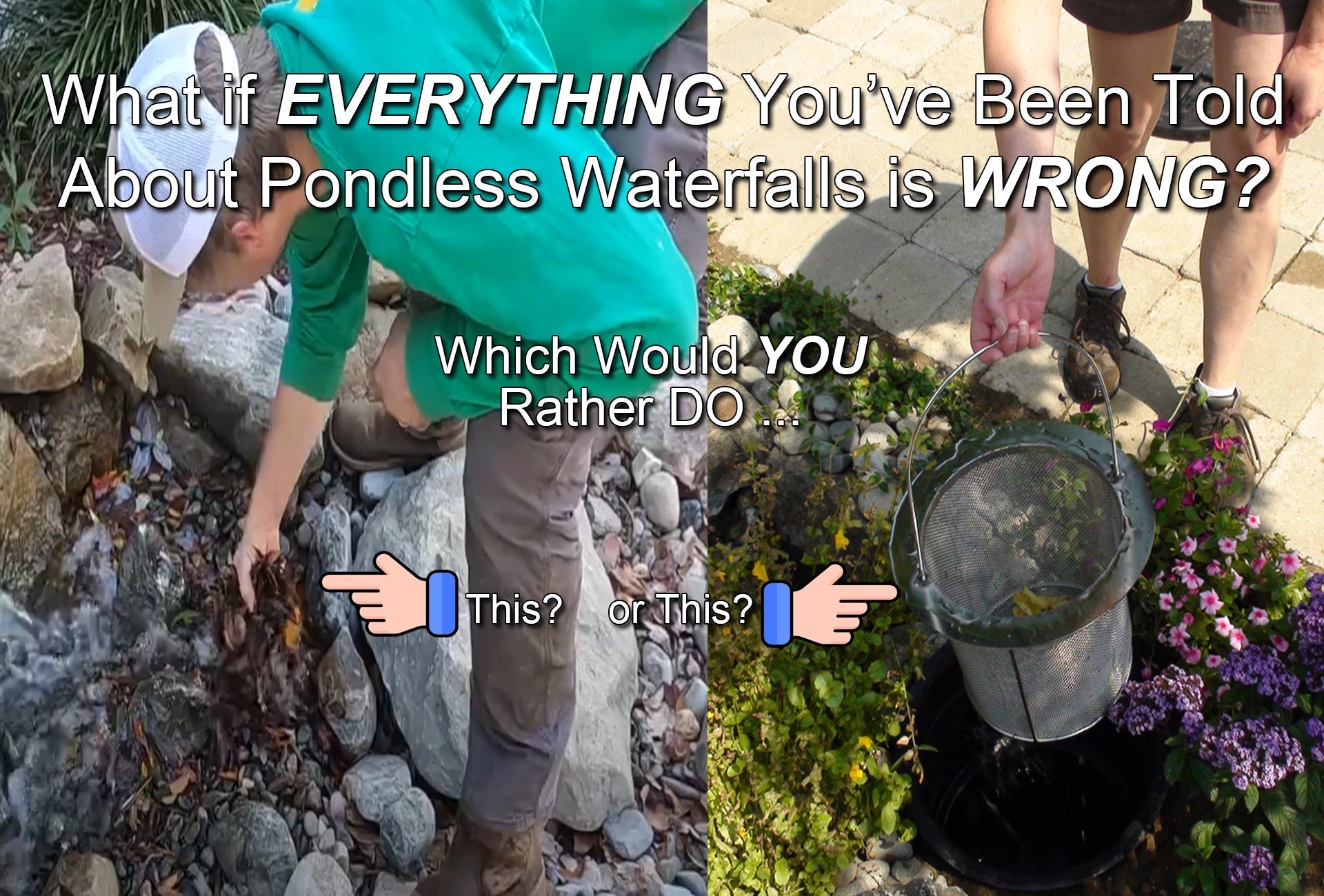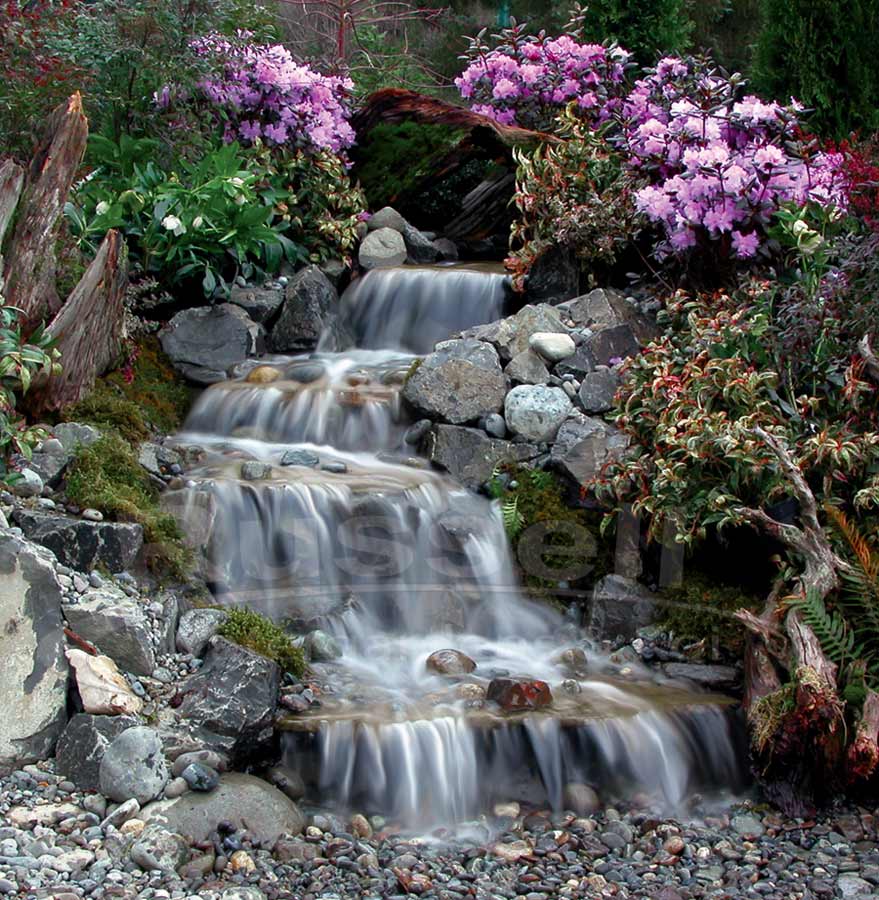
How to size a pondless waterfall reservoir accurately with no guesswork.
We invented the pondless waterfall concept at the turn of the last century for everyone that wanted the sights and sounds of a waterfall, but didn't want a pond, or any standing body of water that can attract mosquitos when the waterfall pump gets turned off.
The pondless waterfall concept was built upon the idea of having all the water disappearing into an underground water storage reservoir when the pump gets turned off.
That is where we came up with the generic term: "pondless waterfall" in the first place. We invented the concept of a waterfall without a pond and called it a "pondless waterfall", and now the term is recognized world-wide.
Ever since our pondless waterfall invention was released to the masses in catalogs and magazines by a popular filtration manufacturer in the early 2000's, people around the world have been intrigued by our pondless waterfall concept.
You love the idea of a waterfall without a pond in your landscape and you're interested in building a pondless waterfall yourself, or thinking of hiring a contractor to build one for you - so you turn to the internet to get ideas and design information.
You read page after page, and watch video after video only to get confused about what the water storage reservoir size should be, where it gets installed, and how it gets cleaned.
The common line repeated time and time again by manufacturers, retailers, installers, and including the A.I. bots themselves, is that "you need to construct a pondless waterfall reservoir two to three times larger than necessary".
The common sense question to ask is .....WHY?
Let's dig into the details.
The Popular Pondless Waterfall Reservoir Size Myth:
"The pondless waterfall reservoir needs to hold two to three times the amount of water that is in motion."
Again ...... we ask ..... WHY?

Math is math, water volume is water volume. A gallon of water is a gallon of water, no matter what you contain it within - unless you are containing something other than water along with the water in the storage device such as rock and gravel. Why build a reservoir that will hold 2-3 times the "water in motion"? The "myth" relies upon rock and water displacement guesswork and NOT math. Let's take a look at the actual math.
We know, math isn't fun and sexy, but knowing a little math is critical in determining how much water a pondless waterfall reservoir must hold.
To calculate the total "water in motion" volume, add the height of the waterfalls to the length of the stream to find the "total length". Then multiply the "total length" by the average stream width, and average stream depth to find the actual cubic footage of "water in motion" that needs to be stored underground in a pondless waterfall reservoir. Multiply the cubic footage by 7.48 as there are 7.48 gallons of water in one cubic foot.
The math is the same, no matter what your design calls for - simply "plug-in" your numbers to find how much water is "in motion" that must be stored underground in any pondless waterfall design.

Water Volume Calculation Formula for All Pondless Waterfall Designs
(Length + Height = Total Length) × Average Width × Average Depth × 7.48 = Gallons of "water in motion" that must be stored underground to make the design truly "pondless" when the pump is turned off.
Example pondless waterfall design dimensions: For a series of waterfalls cascading down a 3 foot high slope into a 15 foot long stream that has an average width of 2 feet, and an average depth of 2 inches.
Convert the stream depth in inches to feet by dividing by twelve. 2 inches ÷ 12= 0.17 feet.
Here is the easy math: (3 feet high + 15 feet long = 18 feet total length) 18' total length × 2' wide × 0.17' deep = 6.12 cubic feet of "water in motion" in this design example.
To convert cubic footage to gallons, multiply 6.12 cubic feet × 7.48 gallons per cubic foot to find that there are 45.78 gallons of "water in motion" that must be contained underground in this design example.
Hydro Chamber™ and Hydro Sieve™ Pre-filter Features
the Water Storage Area Above the Pump

Each combination of one HydroSieve™ pre-filter and one HydroChamber™ together holds a little over 52 gallons of water "above the pump". This means that the pump is pumping water from the space where it sits - called the "Working Water Area for the Pump", and not from the water storage capacity area.
With Russell Pondless Systems™, the pump sits in the large "Working Water Area for the Pump" completely below the water storage area, with room for multiple pumps - vertical and/or horizontal.
This means that all the water volume that needs to be stored is stored underground "above the pump" inside the Hydro Chamber™ water storage tank. This makes for a much smaller excavation size with zero "guess-work" about the reservoir size and dimensions compared to rubber lined excavations filled with multiple layers of underlayment, a slotted pump vault, multiple matrix blocks, and lots of rock and gravel.

With all the guesswork as to what size the rock and gravel reservoir should be, if you don't follow exact math, you may end up with a reservoir that isn't capable of holding all the water that is in motion when the pump gets turned off.
We have seen countless pondless waterfalls like these screenshots from YouTube videos that aren't "pondless" when the pump gets turned off - the water level rises over the matrix blocks, over the river rock, and over the liner edge. Look at the pondless waterfall reservoirs behind the guys in the screenshots - there should be no visible water in the pondless waterfall reservoir basin when the pump is turned off.

- A pondless waterfall that overflows its basin when the pump is turned off is NOT "pondless"
- A pondless waterfall that pools up at the basin when the pump is turned off is NOT "pondless"
- A pondless waterfall that has any visible "standing water" in the basin whatsoever when the pump is turned off is NOT "pondless"

Russell Pondless Systems™ stores all the water in motion underground when the pump is turned off ...
making the system truly "pondless"

Manufacturers, retailers, and installers of common rock and gravel pondless waterfalls with the slotted pump vaults and matrix blocks all repeat the same myth that "you need to make your water reservoir 2-3 times larger than the size required to store the water that is in motion".
They repeat that popular misinformation because their pump vault sits virtually "within" the water storage area, and not below it, like the pump does inside the Hydro Chamber™. A pump sitting within the water storage area is using water from the storage area for the water in motion over the waterfalls and stream. Then, when the pump gets turned off, the water reservoir will over-flow if not "doubled" or "tripled" in size.

In our example pondless waterfall, why excavate the pondless waterfall reservoir to hold 91.56 gallons at two times the size needed, or 137.34 gallons at three times the size needed when all you need to store is a little under 46 gallons of water?

The answer is simple, the pump pumps water out of the water storage capacity area, and not its own "Working Water Area" within the slotted pump vault as it does with the Hydro Chamber™.
By themselves, slotted pump vaults contain only a few inches of water for the pump in which to work - called the "Working Water Area for the Pump". Thus requiring water for the pump to be held within the storage area above the pump for proper submersible pump operation.
The following diagram demonstrates the difference in the working water area for the pump between a Hydro Chamber™ and a slotted pump vault:

Whatever amount of water storage area that is used for normal pump operation is storage space that is NOT available for water storage when the pump is turned off. The myth tells you "the reservoir basin must hold 2-3 times the water volume in motion" because half of the water storage area is being used by the pump, and NOT available for water storage when the pump is turned off.

The reason why so many manufacturers and contractors repeat the reservoir myth and tell you to excavate a pondless waterfall reservoir "two to three times the size required" is because of water displacement by rock and gravel, and the fact that the pump requires more water to safely operate than the slotted pump vault provides by itself.
The popular slotted pump vault shown here contains just 7" of "Working Water Area for the Pump" in which to operate. The matrix blocks above the pump are for the actual water storage, while the rock and gravel area above the matrix blocks act as the pre-filter for trapping leaves and debris for hand removal.
The slotted pump vault stores very little water. The rock and gravel stores very little water. So the only "actual" water storage is contained within the matrix blocks inside the rubber lined reservoir basin.
The problem is that submersible pumps require more than just the 7" of water depth inside a slotted pump vault to properly, and safely perform - whether they be horizontal or vertical submersible pumps. In just 7" of water, any evaporation or water loss will lower the "Working Water Area" inside the slotted pump vault to unsafe levels and cause the pump to start "sucking air". Pumps pumping air instead of water pre-maturely burn out, especially when the rock and gravel start to clog with leaves, debris, and algae as they are prone to do. If the 7" of water around the pump goes down just a little bit for any reason, the pump will start sucking air and burn itself out. Replacing pumps is not cheap.
How do you know where the water level is supposed to be within a slotted pump vault? The instructions included with the slotted pump vault don't tell you the safe operating level for your pump.


These are the manufacturers' instructions for installing an automatic water fill valve:
"Drill a ¾" hole in side wall of skimmer, pondless waterfall vault, or decorative basin. Exact location for the water fill valve will be different for each unit. Fill valve location should be 1" above the desired water level."
The obvious question to ask when following their instructions:
"What is the 'desired water level'?"
The slotted pump vault is NOT pre-plumbed for an automatic water fill valve, and the manufacturer's instructions tell you HOW to drill a hole in the unit, but don't tell you WHERE and at WHAT LEVEL the "desired water level" is supposed to be inside the slotted pump vault, or even their pond skimmer for that matter! Why? Do they NOT know where the "desired water level" should be inside their own products? Do they expect you to just guess what the "desired water level" is supposed to be for proper pump operation in their products?
Russell Watergardens takes a different approach .....
Our HydroClean™ pond skimmers and the Hydro Chamber™ come pre-plumbed with an automatic water fill valve port at the exact location for proper pump operation - we don't expect you to just "guess" as to what the "desired water level" should be.
The Hydro Chamber™ is pre-plumbed for an automatic water fill valve at the exact height above the "Working Water Area" for proper pump function and water storage. Slotted pump vaults create "guess-work" when it comes to where the "desired water level" should be inside the unit. Why "guess"? Be accurate with a Hydro Chamber™.

In order to keep several inches of water above the pump, the matrix blocks are not being used for 100% water "storage", but 50% for proper pump operation - leaving you with only 50% storage capacity. That is why they tell you to store at least twice as much water as needed.
Russell Pondless Systems™ solve the reservoir basin size dilemma with an easy to install underground pre-filter and water tank system that supports actual math calculations. With Russell Pondless Systems™ you are not required to dig a larger excavation than needed, because there is no need to store more water than necessary.

Why dig a huge hole, only to fill it back up with multiple layers of underlayment, rubber liner, multiple matrix blocks, a slotted pump vault, and tons of rock and gravel that is impossible to keep clean? When a single easy to clean HydroSieve™ pre-filter and Hydro Chamber™ installed directly into the earth can replace all of that in much less space and at less cost.

There is no need for multiple layers of underlayment to protect the rubber liner inside the reservoir basin - because there is NO rubber liner and NO basin!
The rubber liner for the waterfalls and stream connects directly to the HydroSieve's™ inlet pipe.
The HydroSieve™ pre-filter and Hydro Chamber™ are heavy duty direct burial units that are impervious to the tree roots, rocks, and other objects in the soil that can puncture rubber liner. The heavy duty HydroSieve™ pre-filter and Hydro Chamber™ simply get installed directly in the ground with no underlayment, liner, matrix blocks, or slotted pump vault. The HydroSieve™ pre-filter and Hydro Chamber™ are much less expensive, easier to install, and allow for easy routine maintenance. Rock and gravel pondless waterfalls must be cleaned by hand.

Russell Pondless Systems™ easy to clean pondless waterfalls are common sense. Install a Russell Pondless System™ next to any brand pondless waterfall, and you will see which one provides unlimited design options, is easier to install, easier to clean, which one has a lower cost of ownership, and which one can stay as beautiful as the day it was built.
If you are a "Do-it-Yourselfer", doing it right the first time will save you money, aggravation, and time. Search YouTube on "How to clean a pondless waterfall" and you will see the giant hassle of hand-picking leaves and debris, pressure washing, and the complete draining of rock and gravel reservoirs you will be avoiding with a Russell Pondless System™.
If you are a contractor, install one of each in your showroom area or landscape for your own understanding, and then use them as a sales tool to demonstrate the differences between the pondless waterfall concepts we are talking about.
An easy to clean pondless waterfall that actually remains pondless when the pump gets turned off, or a difficult to clean pondless waterfall that isn't pondless when the pump gets turned off unless the reservoir is two to three times the size and price it needs to be.
When planning your pondless waterfall, you can either be frustrated by misinformation, or happy that you made the right choice with a Russell Pondless System™.
The pondless waterfall reservoir size myth has been exposed! Pondless waterfall reservoirs DO NOT NEED TO STORE 2-3 TIMES the "water in motion" when you install a Russell Pondless Systems™ easy to clean pondless waterfall.

